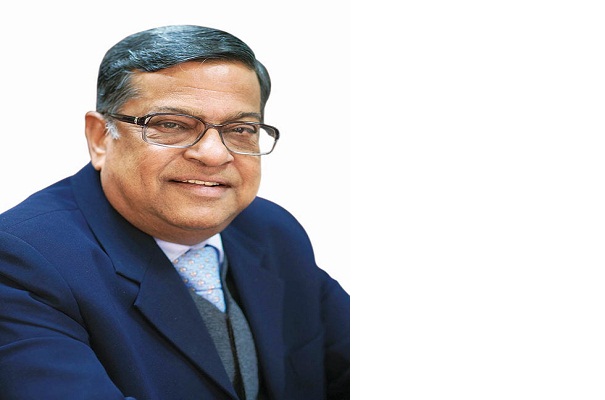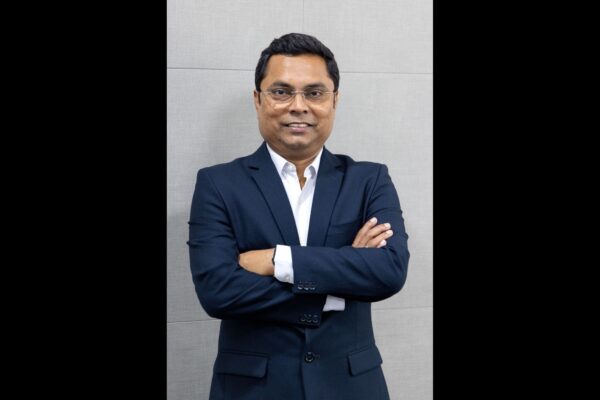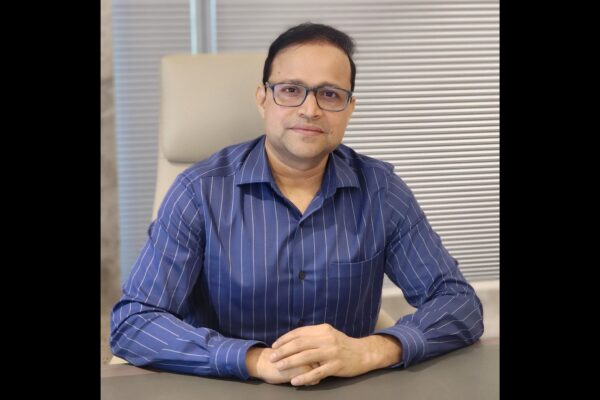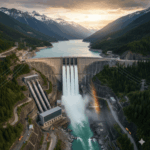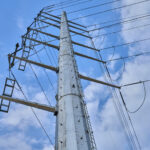Hyderabad Metro will boost the economy
Metro projects take a long time to construct and the huge challenge of right of way needs to be overcome, states V B Gadgil, Managing Director & CE, L&T Metro Rail (Hyderabad) Limited, in an interaction with EPC World.
What, in your opinion, is the role of Mass Public Transit System (MRTS) in the Indian urban transportation system as the most environmentally- sustainable transport today?
Improving infrastructure is the key to India’s and other developing country’s growth and development. Public transport mechanism in a highly populated country like India is often complex. For having an efficient MRTS, all modes of public transport should be kept under one governing body (city municipality) like as the developed countries which ensures connectivity to different parts of the city by acting as a feeder to each other system.
The most difficult challenge faced in connection with mass rapid transit system implementation is that when we can say the city is ready to have a MRTS. Should one allow demand to be created first and then implement MRTS or proactively implement MRTS and then allow demand to grow. It is really “Chicken or egg” kind of question.
Efficient project execution and O&M strategies in developing world class transport networks, employment generation and skill development are significant features of this model, resulting in overall economic development.
How is Hyderabad Metro faring? How is the work on the other phases of Hyderabad Metro progressing? Are they likely to meet their respective targets of commencement?
Hyderabad Metro Rail Project will transform Hyderabad into one of India’s most futuristic cities, with an integrated urban transport plan using inter-modal connectivity and convenient sky-walks. The Metro will mark the beginning of an era of seamless commuting in Andhra Pradesh. Life of Hyderabadis will itself undergo a quantitative and qualitative change for better.
It is an iconic infrastructure project in offing. This project is expected to trigger robust economic activity in and around the city and will generate substantial employment.
Project Progress:
• Over 60% (weighted average) of the project is complete. 53 km of foundations (74%), 50 km of Piers (70%), 41 kms of Viaduct (58%) have been completed.
• Two major depots of Uppal&Miyapur have been completed along with Stage 1 of 8 km from Nagole to Mettuguda (Corridor III).
• Stage 2 Miyapur to S R Nagar (Corridor I) is in the completion stage. Trial runs have been commenced.
• 48 trains received (3 car trains). Balance trains will be received by Feb 2016 with rollout of the last train from factory at Changwon, South Korea is scheduled in the month of February 2016.
• All trains are in various stages of testing at depots and completed guide ways (of around 20 kms).
Commercial operations are to be finalised and is based on various technical, operational and financial parameters and in consultation and concurrence of all Stake holders.
What are the pros & cons of the PPP and EPC models of funding the metro rail projects? Which is the preferred alternative and why? Has PPP model been rewarding?
A PPP structure will ensure better value for money, higher performance incentives, apart from faster construction and cost-effective delivery. The accountability is well-defined, and the risk is with the PPP player. An EPC structure will ensure a guaranteed price, a specified level of performance, with a single point of responsibility.
The LTMRHL – Hyderabad Metro Rail Project is a unique PPP model – ‘World’s Largest Public-Private Partnership Project in the Metro Sector’ that would set an example to the world and boost the economy of the country. Better infrastructure always attracts investors globally.
What kind of challenges do you face during the execution of the project?
Pre-construction
1. Underground utilities and no readily available drawings.
2. Involvement of too many government agencies with lengthy procedures.
3. Clash of interest.
Dealing with Railways OrDefence
1. Long drawn process of approval.
2. Support from GOT or MOR or MOD.
Land
1. Responsibility of procuring Right of Way (RoW) and land rests with the government. Delay in acquiring land is detrimental for the project.
2. Private acquisition difficult with lengthy procedures.
3. Social considerations need to be factored – A challenging assignment.
4. Risk for concessionaire if construction commences before availability of complete land parcels and unhindered availability of RoW.
5. Lack of continuous RoW in a linear project like Metro.
6. Difficulties in procuring technically required RoW in congested areas.
Alignment Finalisation
1. Limitation on sharp curve < 130.
2. Frequent changes even after finalisation of alignment.
Design
1. Design reworks due to uncertain ground features.
2. Lack of standardization in Metro sector.
3. Concurring engineering resulting due to – underground utility diversions and frequent changes in finalised alignments.
System Integration
1. Involves complex system integration for fully functional operational system.
Traffic Mangement
1. Limited availability of RoW and limited road width in core areas of the city.
Ridership
1. Lack of definitive data. Heavily dependent of city development-Last Mile connectivity.
2. Non fare revenues.
3. Unpredictable economic growth both in the country and city.
Financial Challenges
1. Volatile financial market.
2. Interest during construction.
3. Large Foreign Exchange Exposure – Volatility of Rupee vs USD & Euro.
4. Cost risk or cost overrun risk due to delays leading to cost increase and inflation of inputs.
How far has the government´s target of attracting investments of ` 56 lakh crore into the infrastructure sector during the 12th Five-Year Plan (2012-13 to 2016-17) benefited the progression of the metro rail projects?
This has not been largely used in the Mass Public Transit System as yet, and this sector is still developing. Though more cities are looking to build Mass Public Transit System, it is to be noted that these projects take a long time to construct and the huge challenge of right of way needs to be overcome.
System is well designed to facilitate inter modal transfer and also expansion as the city grows radially.
Are all the metro rail corridors utilised to the optimum level? What is the significance of first mile and last mile connectivity for proper utilisation of capacity?
The project is still under construction and the question of optimum utilization will arrive only after commissioning the entire project. The success of any Mass Public Transit System is hugely dependent on first & last mile connectivity along with development around the stations.
What kind of opportunities will the government’s 100 Smart Cities provide for the metro rail projects?
Accelerated urbanization will continue for quite some time to come, and definitely there is a drastic need for an efficient Mass Public Transit System in existing cities. It will be challenging to put up an efficient Mass Public Transit System in existing cities and Metros due to various factors like congested roads, heavy density of traffic, inadequate suitable land etc. Planned new cities with transport as backbone having Mass Public Transit System will be ideal, provided, futuristic, long-term planning is properly done, not remaining myopic which has been the hallmark of Urban Infrastructure in India in the recent past. Mass Public Transit System is considered to be modern, safe, green and reliable and as such will be very much favoured.
Present initiative of 100 Smart Cities though laudable is properly not conceived with a lot of vested interests of few technology providers. What is required is a robust basic infrastructure relating to water supply, sewage disposal, efficient transport, electricity distribution network, solid & liquid waste management etc., Smartness has to come from effective and efficient use of all resources in all walks of life.
What are your expectations in order to expedite the progress of Metro rail projects in the country?
Most important is to have a robust model for execution of such projects on the lines of PPP with clear change of mindset of all the concerned. There is requirement for availability of Infrastructure Fund with low interest and long tenure.
Challenges faced in the sector: If these challenges are addressed, we are sure metro rail projects will excel.
In the pre-construction stage, difficulties are being faced because no comprehensive map of underground utilities was available.
Encumbrances related to land, such as acquiring continuous right of way and acquisition of private land, are also responsible for delays in project execution.
On support that government agencies should extend to metro rail concessionaires. Though several opportunities are available in the metro sector, government should ensure that coordinated approvals from different government agencies both at the Central and state levels will definitely ease the pains presently being felt.
Standardization of technical specifications and unification of the same across the country which will help in a great way.
Financial challenge for funding such long gestation infra projects is basically to private companies. A special funding with low interest and for long duration or funding tied with International agencies to provide Low Interest, unfortunately is not available to private entities.

